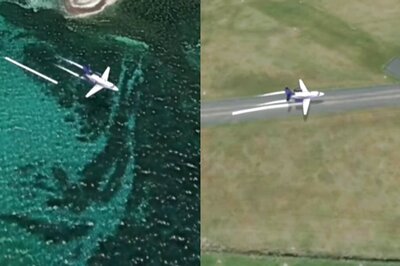
views
Washington: NASA has launched a probe to study the sun and its dynamic behaviour "in greater detail than ever before".
A rocket 'Atlas V' carrying the Solar Dynamics Observatory (SDO) was on Thursday launched from Florida's Atlantic Coast.
The SDO is the first-of-its-kind spacecraft designed to study the sun, the agency said.
It is expected to unlock the processes inside the sun, on its surface, and in its corona that result in solar variability which when experienced on Earth, is called space
weather.
The five-year mission will disclose the sun's inner workings by constantly taking high resolution images, collecting readings from its inside and measuring its magnetic
field activity.
It "will determine how the sun's magnetic field is generated, structured and converted into violent solar events like turbulent solar wind, solar flares and coronal mass
ejections," according to the agency.
This data is expected to eventually help researchers predict solar storms and other activity on the sun that can affect spacecraft in orbit, astronauts on the International
Space Station and electronic and other systems on Earth.
This will further allow us to accommodate or mitigate the effects of space weather -- which can disable satellites, cause power grid failures and disrupt GPS, TV and
telecommunication signals, the agency said.
The mission -- a part of the agency's science program 'Living With a Star' developed to understand and address those aspects of the sun and solar system that directly affect life and society -- will also measure the extreme ultraviolet irradiance of the sun that is a key driver to the structure and composition of Earth's upper atmosphere.



















Comments
0 comment